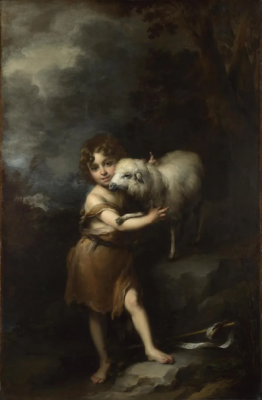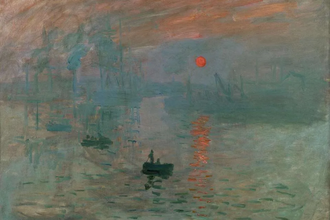Gospel in Art: Solemnity of the Nativity of Saint John the Baptist

The Infant Saint John with the Lamb, by Bartolomé Esteban Murillo, painted 1660-1665 © National Gallery, London
Source: Christian Art
Gospel of 24 June 2024
Luke 1:57-66, 80
The time came for Elizabeth to have her child, and she gave birth to a son; and when her neighbours and relations heard that the Lord had shown her so great a kindness, they shared her joy.
Now on the eighth day they came to circumcise the child; they were going to call him Zechariah after his father, but his mother spoke up. 'No,' she said 'he is to be called John.' They said to her, 'But no one in your family has that name', and made signs to his father to find out what he wanted him called. The father asked for a writing-tablet and wrote, 'His name is John.' And they were all astonished. At that instant his power of speech returned and he spoke and praised God. All their neighbours were filled with awe and the whole affair was talked about throughout the hill country of Judaea. All those who heard of it treasured it in their hearts. 'What will this child turn out to be?' they wondered. And indeed the hand of the Lord was with him.
Meanwhile the child grew up and his spirit matured. And he lived out in the wilderness until the day he appeared openly to Israel.
Reflection on the painting
Only three birthdays are celebrated on the Church's liturgical calendar: the Nativity of Our Lord (December 25), the Nativity of his Mother (September 8), and the Nativity of his forerunner, John the Baptist, on 24 June. Furthermore, Saint John the Baptist is one of the few saints who have two feast days. Each year the Church celebrates both his birth on 24th June and his martyrdom on August 29th.
Our painting by Bartolomé Esteban Murillo from circa 1660 depicts a young John the Baptist tenderly interacting with a lamb, symbolising Jesus Christ as the Lamb of God. The scene is set in a rocky landscape, a reference to the wilderness in which John lived as a young man, dressed in a camel-hair tunic and eating locusts. John's left hand points towards heaven. According to the Gospels (John 1: 29), when Saint John met Christ he declared: 'Behold, the Lamb of God'. These words are inscribed in Latin on a ribbon wound around a reed cross, one of Saint John's attributes, at the bottom right of our painting.
By transforming adult biblical characters into children, Murillo appealed to viewers, encouraging them to emulate a child-like state of innocence and purity. Our painting was made for Don Justino de Neve, a canon of Seville Cathedral and one of Murillo's most devoted patrons; the artist also painted his portrait. In 1665, Justino lent this and several other paintings by Murillo to the church of Santa María la Blanca in Seville. During festivities marking the newly reconstructed church's inauguration, a spectacular temporary altar was erected in the square in front of the church's facade. According to contemporary accounts, this painting was displayed there. Judging by the numerous engravings after this picture, it was one of Murillo's most popular and recognisable paintings.
Saint John the Baptist. Pray for us.
LINKS
Gospel in Art: https://christian.art/
Today's Reflection: https://christian.art/daily-gospel-reading/luke-1-57-66-80-2024/


















